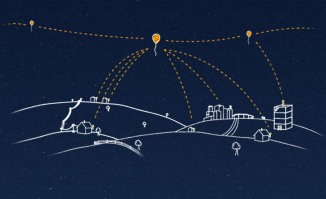Project Loon is Google’s R&D project aiming to provide internet access to rural and remote areas. Balloon-Powered Internet for Everyone is what Google aims at doing. Project Loon balloons travel around 20 km above the Earth’s surface in the stratosphere, almost twice as high as airplanes and the weather. The balloons are guided by the slow and steady winds in the stratosphere. Project Loon uses software algorithms to determine where its balloons need to go, then moves each one into a layer of wind blowing in the right direction. By moving with the wind, the balloons can be arranged to form one large communications network. People connect to the balloon network using a special Internet antenna attached to their building. The signal bounces from balloon to balloon, then to the global Internet back on Earth.
Project Loon started pilot testing in June 2013 in New Zealand. A small group of Project Loon pioneers tested the technology in Christchurch and Canterbury. Thirty balloons were launched from New Zealand’s South Island, and beamed Internet to a small group of pilot testers. The final outcome was that the balloons were able to get a range of about 40 km with rather constant speeds in the lower broadband regions. A lot of other findings were made and Google is now working on improving the Loon.
A Google official stated that India is among the countries that have showed an interest in implementing Project Loon. Google’s Project Loon has been received with criticism and awe alike. Project Loon is a source of hope for a lot of Indians. While there is no word on when Loon will reach India, I do hope it’s soon enough. The success of this project depends on how the regulators in India greet it because the project will be requiring spectrum, which is firmly regulated in the country. The usage of radios and spectrum will be a touch task to tackle in the country.


